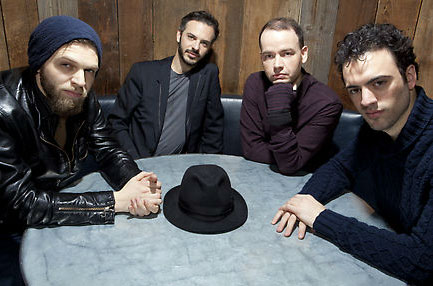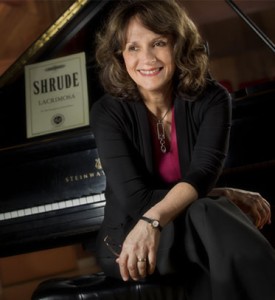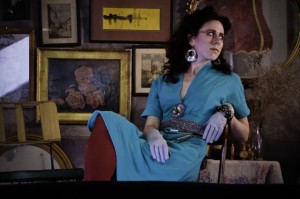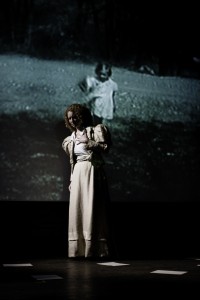Nothing stays the same f or very long these days, especially in NY. So I shouldn’t have been surprised when Brooklyn Rider’s first violinist Johnny Gandelsman and I meet at 11th and University Place–once Dean and De Luca, but now Argo Tea Cafe. Gandelsman approaches and we slip into the cool of the cafe on a warm afterrnoon two days after the 10th aniversary of 9/11. He suggests Armenian tea, which chimes perfectly with the quartet’s repertoire — they’ve recorded Komitas Vardapet’s Armenian Folk Songs on their Passport CD on their In A Circle Records label — plus they’re all members of the Silk Road Ensemble which focuses on the cultures linked by the Silk Trade Route, which included Armenia. Brooklyn Rider’s about that same kind of inclusiveness, and it’s no accident that we meet at the Argo. For wasn’t that the name of the ship which took Jason and his men across uncharted seas to get the Golden Fleece?
or very long these days, especially in NY. So I shouldn’t have been surprised when Brooklyn Rider’s first violinist Johnny Gandelsman and I meet at 11th and University Place–once Dean and De Luca, but now Argo Tea Cafe. Gandelsman approaches and we slip into the cool of the cafe on a warm afterrnoon two days after the 10th aniversary of 9/11. He suggests Armenian tea, which chimes perfectly with the quartet’s repertoire — they’ve recorded Komitas Vardapet’s Armenian Folk Songs on their Passport CD on their In A Circle Records label — plus they’re all members of the Silk Road Ensemble which focuses on the cultures linked by the Silk Trade Route, which included Armenia. Brooklyn Rider’s about that same kind of inclusiveness, and it’s no accident that we meet at the Argo. For wasn’t that the name of the ship which took Jason and his men across uncharted seas to get the Golden Fleece?
Brooklyn Rider may not be after physical treasure but their wide repertoire clearly shows their love for music old and new. Gandelsman, 34, serves as the spokesman for the quartet because second violinist Colin Jacobsen, 33, and his cellist brother, Eric, 29, and violist Nicholas Cords, 37, can’t make it .
“The availability of all types of music is not just a generational thing because anyone with an interest can access the internet which brings the world closer together, and it makes you realize that differences are not as big as they seem.”
Gandelsman, who speaks in a firm, but moderate tempo, with faint traces of his Russian and Israeli roots (he emigrated to the US as a child) sees other commonalities. He calls the Persian Kayhan Kalhor, who’s also in Silk Road, ” a master of his insrument,” the kamancheh ( itals ) fiddle, and thinks that Brooklyn Rider’s unique, nearly vibratoless sound is, in a way linked to “ethnic” traditions like Kalhor’s.
“We definitely go for a more immdediate sound, and our approach to sound in general is that we try to sound like one person. We stack things verticallly.”
And this of course lets each voice emerge with maximum clarity, as parts of a unified whole. But are their musical interests the same?
“We share the same aesthetic and all of us have known each other for a long time –we’ve been playing together for over ten years, and with the quartet for about six years,” he says. But that aesthetic and love isn’t limited to the masterworks of the quartet literature, but to historically informed performances in the field of “period music”, which he says has “flourished in the last couple of decades,” which includes the Catalan Jordi Savall, the Dutchman Aner Bylsma, and the Italian ensemble Il Giardino Armonico.
Gandelsman is also eager to talk about their new 2 CD Orange Mountain Music set, Brooklyn Rider Plays Philip Glass.
“What’s interesting is when we tour people love hearing Philip’s music– they’re not fools,” he says about the popular and (itals ) ever controversial composer whose work is often embraced by young performers who confront its challenges head on. ” It’s so emotional. We wanted people to get the immediacy of the little patterns which put you into a certain hypnotic state, like seeing a Persian painting up close.”
He’s especially keen on Quartet # 4 (Buczack ), which Glass wrote for his artist friend Brian Buczack (1954-1987), who died of AIDS — his fellow in Fluxus partner Geoffrey Hendricks commissioned it from Kronos who premiered it at NY’s Emily Harvey Gallery on the second anniversary of the artist’s death – the July 4, 1989. The violinist calls the second slow movement — there are three — ” a standalone piece, ” and its floating interweaving gestures, and subtle ultra precise voice leading are high water marks in Glass’ writing for strings. Gandelsman says Brooklyn Rider has concentrated on “color and texture” here, and that it’s as “profound as most Messaien ,and as spiritual as Bach.”
And their recording brings out the dance-like partnering and shadowing in Movement 1 in ways I hadn’t heard before in Kronos’ Nonesuch CD of # 2- #5. The young Brit quartet Carducci, on Naxos, which I haven’t heard, covers # 1– #4, while the also Brit Duke, on Collins, which I have, covers only # 1 — a bit like Stravinsky’s Three Pieces for String Quartet, with its tenuous but equally beautiful repetitive gestures.
Any piece worth its salt should be able to take many different interpretations , and Gandelsman feels that Debussy’s only quartet — the justly famous and seminal 1903 g minor — is reflected in the Glass 4th. And Brooklyn Rider’s interpretation of the Debussy, which he says they’ve played a lot, brings out its headlong drive and murmuring intensity in ways that few others have — my Alban Quartet version is wonderfully yet predictably strict Viennese. My late friend Virgil Thomson’s quip that “the dead do not rest easy in Vienna” comes to mind. Colin Jacobsen’s hommage/take on the g minor –“Achille’s Heel” – a nod to Debussy’s middle name — with its exquisite trouvere-like opening melody, pungent inner voices, and focus on many different kinds of color and texture, is a fine “post modern” reflection on the great French master’s concerns in his quartet.
And speaking of any piece worth its salt, Brooklyn Rider will be performing one of the absolute summits of the quartet literature — Beethoven’s Op. 131 in C, on their October 31 Halloween concert at Carnegie’s Zankel Hall. Gandeslman, who’s from the been there done that whatever generation, is quick to praise the virtues of the hardly on everyone’s lips now French quartet, the Capet, who played, and recorded, in various configurations, but always with founder, first violinist Lucen Capet, from the 1890’s to their 1928 disbanding.
“Some people would listen to a recording of them , and find it foreign and inappropriate,” Gandelsman says. But, he adds, what attracts him and Brooklyn Rider to the Capet’s sound is “the clarity of its style of playing, and their unique interpretation, and conviction.”
Which of course says a lot about this unique and utterly distinctive young group, which isn’t afraid of going its own way while still being mindful of the master quartets that have put their utterly unique stamps on what they knew and felt in their time.










